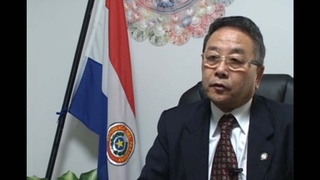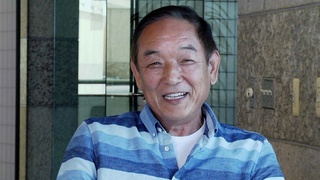Interviews
Leaving for the States without telling my parents (Japanese)
(Japanese) It was 1992, so about 15 years ago I first came to this country. I think my father came from a very, very traditional Japanese household. So of course he doesn’t cook, and he’s the type of person who would tell my mother, “Hey, bring it over,” when he needed an ash tray. He wanted me to become happily married with a Japanese man through an arranged marriage, but I didn’t let it turn out that way, so I bet he was really, really angry with me. So mad that I couldn’t even talk to him. My mother used to teach at a junior high school. And even though my mother does have a strong personality, she’s not the type of person who would talk back to my father like I would. She just keeps quiet and bears through it. I see that as one of her strengths. Anyway, it’s funny when I think about it now, but I secretly prepared for my departure, not telling anybody until the very last minute; I sent a letter to my parents from the airport, telling them that I was leaving for America. Honestly, it was like I ran away from home. I’m sure my parents were shocked [laughs]. But I don’t think I would’ve been able to make it over here had I not done something drastic like that.
Date: March 1, 2007
Location: California, US
Interviewer: Yoko Nishimura
Contributed by: Watase Media Arts Center, Japanese American National Museum
Explore More Videos

Life in Davao, Philippines
(b. 1938) Philipines-born hikiagesha who later migrated to the United States.


Carrying on the Legacy in the Colony of Paraguay (Japanese)
(b. 1943) Paraguayan Ambassador to Japan


Attitudes toward Hikiagesha
(b. 1938) Philipines-born hikiagesha who later migrated to the United States.

Move to Los Angeles
(b. 1938) Philipines-born hikiagesha who later migrated to the United States.

First Impressions of the US
(b. 1938) Philipines-born hikiagesha who later migrated to the United States.

Great grandfather working in Hawaii
(b. 1952) Former banking executive, born in Hawaii

First impression of America (Japanese)
Shin Issei – owner of izakaya (Japanese-style tavern) and kappo (small Japanese diner) restaurant, Honda-Ya

Longing for a life abroad and getting a chef’s license (Japanese)
Shin Issei – owner of izakaya (Japanese-style tavern) and kappo (small Japanese diner) restaurant, Honda-Ya

Support from Nikkei (Japanese)
Shin Issei – owner of izakaya (Japanese-style tavern) and kappo (small Japanese diner) restaurant, Honda-Ya

Immigration ship Brazil-maru (Japanese)
Shin Issei – owner of izakaya (Japanese-style tavern) and kappo (small Japanese diner) restaurant, Honda-Ya

Great grandfather Asato was a sumo wrestler
Okinawan American whose parents are from Peru.

Grandfather loved to tell her stories of her great-grandfather Arakaki
Okinawan American whose parents are from Peru.

Parents leaving Peru to move to California
Okinawan American whose parents are from Peru.
